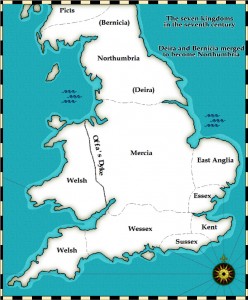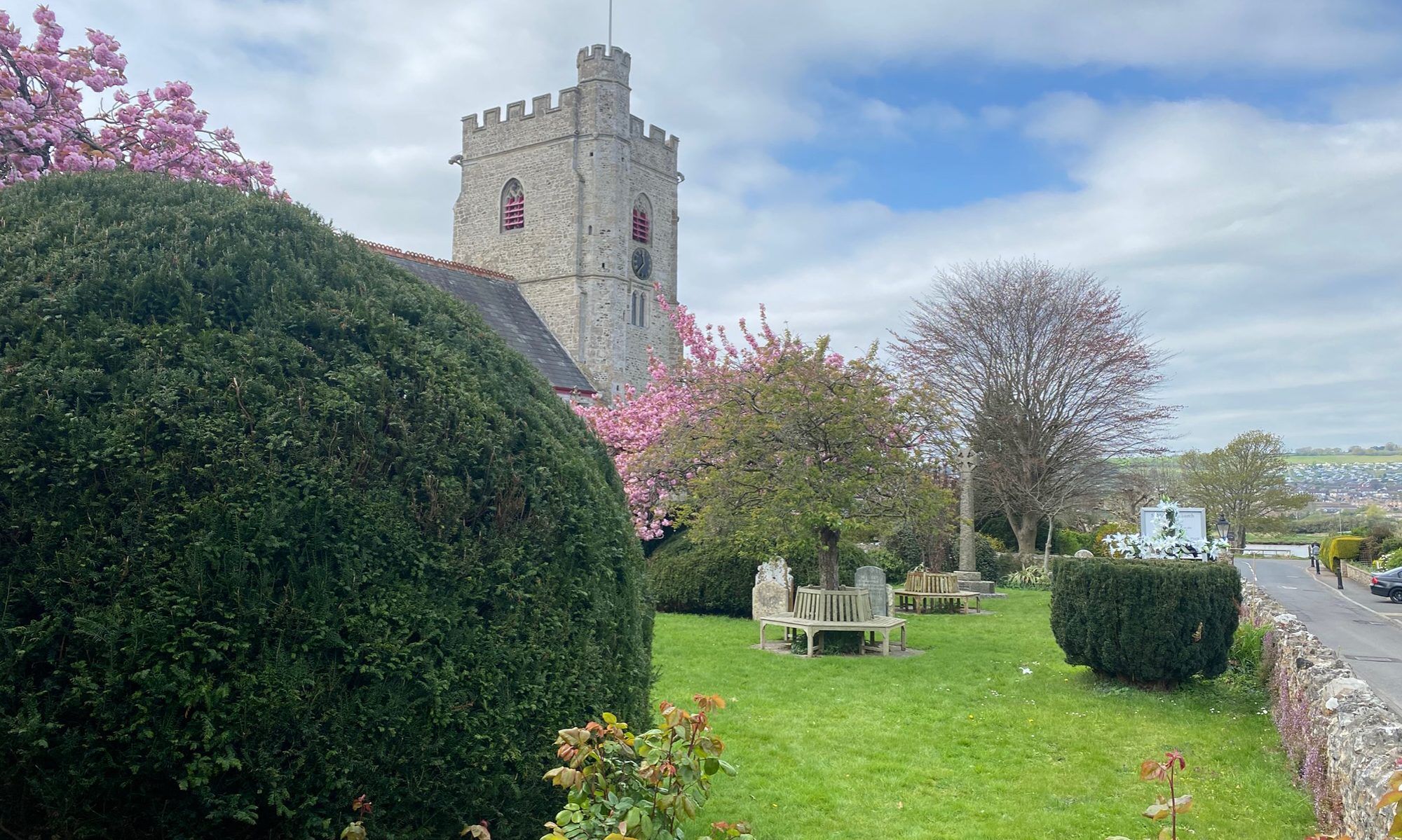In the course of the gradual Saxon penetration across southern Britain, the Anglo-Saxon Chronicle records a battle in AD 614 at Bean Dune, thought by some historians to refer to Bindon, the estate just to the east, high above the village of Axmouth. If this is so, then the Saxon advance into the Axe Valley was some fifty years ahead of the general invasion of the British-held lands of the Westcountry. A decisive battle was fought in 658 at Peonnum (probably Pen-Selwood or Pinhoe), from which time the Saxons ousted the native British tribes in earnest. In 682, the British were driven in flight as far as the sea.
Whatever the exact chronology, Axmouth was one of the first Saxon settlements in Devon. By conquest, it was owned by the Kings of Wessex, including Athelstan, one of the most brilliant of the English Kings.

The Saxon advance coincided with Christian missionary activity. St. Augustine with his team of monks had arrived in Kent in 597, and their influence gradually spread throughout the country. Their influence gradually spread throughout the country. Our own part of the West received the Gospel from this source relatively late, towards the end of the following century, but by that time, other missionaries, from Ireland, had come to Devon. They had followed the path of the first Christians to reach the West, back in Roman times, and thus it seems that there was an organised Church in the area as far back as maybe the second century. Legends are numerous, whereas facts are few, and we shall probably never know whether the first church was founded here in those earliest days, or after the arrival here of the Saxons. There is strong evidence of a Saxon church in 1049 when, according to one version of the Chronicle, Beorn, King of the Middle Angles, was murdered and buried in Axmouth Church by Swegen, son of Godwine, Earl of Wessex.
Edward the Confessor hears that pirates are harrying the West. Godwine, Harold and Tostig go westward. Harold gives up his ship to Beorn. They are weather-bound at Pevensey. Within two days Swegen comes to Godwine and Beorn, and persuades Beorn to accompany him to Edward at Sandwich, but takes him to Bosham on a pretext of his crews. The crews kidnap him and sail to Axmouth [Axamuda] where they slay him and bury him in a church. His friends translate his body to Winchester.
If this record is accurate – and it is only fair to point out that other texts read Dartmouth – it indicates the definite existence of a Saxon church here in Axmouth. There is also the slight but noticeable northward inclination of the chancel in the present building, with respect to the nave, suggesting that the Normans may have built upon earlier foundations. In any event, it is likely that a significant seaport of the time would have possessed at least one church, and there is other evidence for this besides the reference to a church as quoted above.

